The Dam Busters (film)
8.6 /10 1 Votes
100% Rotten Tomatoes Genre Drama, History, War Country United Kingdom | 7.4/10 IMDb Duration Language English | |||||||||||||||||||||||||||||||||
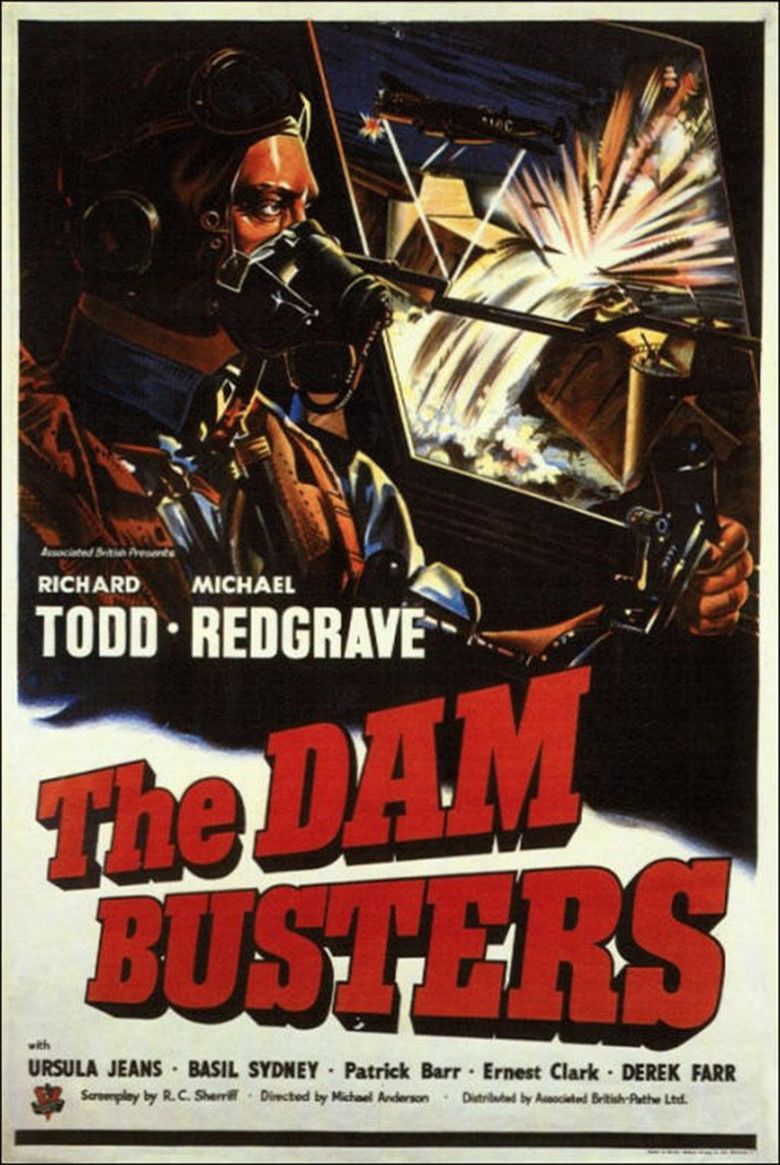 | ||||||||||||||||||||||||||||||||||
Release date 16 May 1955 (1955-05-16) (UK) Writer Paul Brickhill (book), Guy Gibson (based on Wing Comdr. Gibsons own account in "Enemy Coast Ahead"), R.C. Sherriff (screenplay) Screenplay Guy Gibson, Paul Brickhill Cast (Wing Commander Guy Gibson, V.C., D.S.O., D.F.C.), (Doctor B. N. Wallis, C.B.E., F.R.S.), Robert Shaw (Flt / Sgt. J. Pulford, D.F.M.), (Flying / Off. F. M. Spafford, D.F.C., D.F.M.), (Group Captain J. N. H. Whitworth, D.S.O., D.F.C.), (Doctor W.H. Glanville, C.B., C.B.E.)Similar movies Fury , The Thin Red Line , Captain America: The First Avenger , Saving Private Ryan , When Trumpets Fade , None But the Brave | ||||||||||||||||||||||||||||||||||
The dam busters 1955 re created main titles in hd colour
The Dam Busters (1955) is a British Second World War war film starring Michael Redgrave and Richard Todd. It was directed by Michael Anderson. The film recreates the true story of Operation Chastise when in 1943 the RAF's 617 Squadron attacked the Möhne, Eder, and Sorpe dams in Germany with Barnes Wallis's bouncing bomb.
Contents
- The dam busters 1955 re created main titles in hd colour
- Plot
- Cast
- Development
- Production
- Historical accuracy
- The Dam Busters March
- Reception
- Remake
- Influence
- References
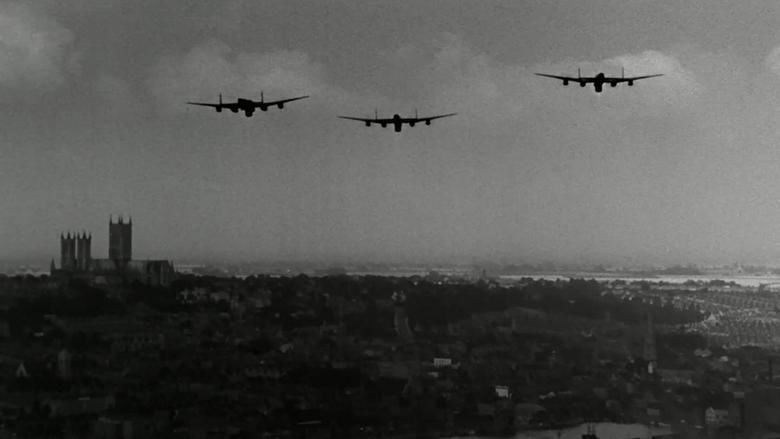
The film was based on the books The Dam Busters (1951) by Paul Brickhill and Enemy Coast Ahead (1946) by Guy Gibson. The film's reflective last minutes convey the poignant mix of emotions felt by the characters – triumph over striking a successful blow against the enemy's industrial base is greatly tempered by the sobering knowledge that many died in the process of delivering it.
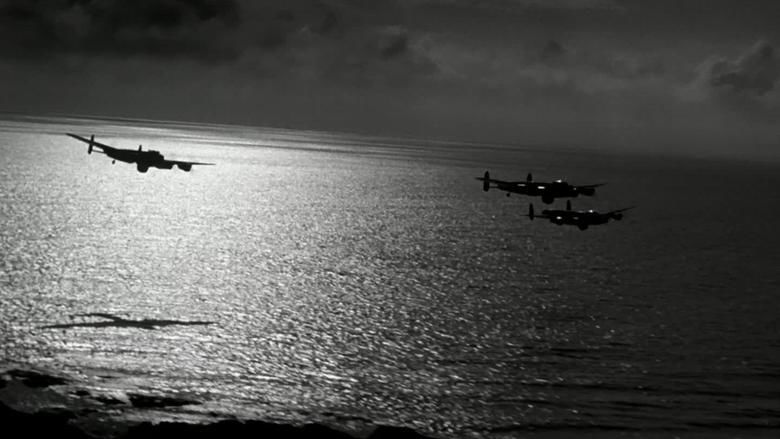
A remake has been in development since 2008, but has yet to be produced as of 2017.
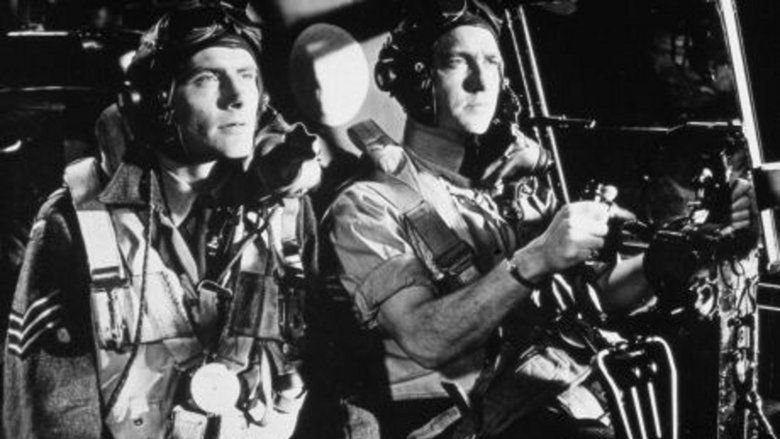
Plot
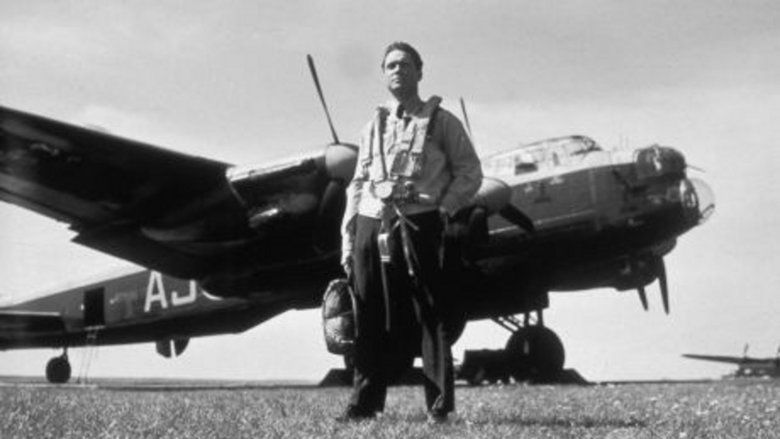
In the early years of the Second World War, aeronautical engineer Barnes Wallis is struggling to develop a means of attacking Germany's dams in the hope of crippling German heavy industry. Working for the Ministry of Aircraft Production, as well as doing his own job at Vickers, he works feverishly to make practical his theory of a bouncing bomb which would skip over the water to avoid protective torpedo nets. When it came into contact with the dam, it would sink before exploding, making it much more destructive. Wallis calculates that the aircraft will have to fly extremely low (150 feet (46 m)) to enable the bombs to skip over the water correctly, but when he takes his conclusions to the Ministry, he is told that lack of production capacity means they cannot go ahead with his proposals.
Angry and frustrated, Wallis secures an interview with Sir Arthur "Bomber" Harris (played by Basil Sydney), the head of RAF Bomber Command, who at first is reluctant to take the idea seriously. Eventually, however, he is convinced and takes the idea to the Prime Minister, who authorises the project.
Bomber Command forms a special squadron of Lancaster bombers, 617 Squadron, to be commanded by Wing Commander Guy Gibson, and tasked to fly the mission. He recruits experienced crews, especially those with low-altitude flight experience. While they train for the mission, Wallis continues his development of the bomb but has problems, such as the bomb breaking apart upon hitting the water. This requires the drop altitude to be reduced to 60 feet (18 m). With only a few weeks to go, he succeeds in fixing the problems and the mission can go ahead.
The bombers attack the dams. Eight Lancasters and their crews are lost, but the overall mission succeeds and two dams are breached.
Cast
In credits order.
Development
Robert Clark of the Associated British Picture Corporation (ABPC) bought the film rights to Brickhill's RAF-approved book in 1951 as a vehicle for Richard Todd. Just prior to the film's scheduled release, Guy Gibson's widow Eve took legal action to prevent it, and Brickhill and Clark were mired in months of wrangling with her until references to her husband's book Enemy Coast Ahead were included. Clark hired R. C. Sheriff to write a script based on a treatment by Brickhill which focused on the dams raid and excluded the later 617 Squadron operations covered in the book. Further work on the script was done by Walter Mycroft.
Production
The flight sequences of the film were shot using real Avro Lancaster bombers supplied by the RAF. The aircraft, four of the final production B.VIIs, had to be taken out of storage and specially modified by removing the mid-upper gun turrets to mimic 617 Squadron's special aircraft, and cost £130 per hour to run, which amounted to a tenth of the film's costs. A number of Avro Lincoln bombers were also used as "set dressing". (An American cut was made more dramatic by depicting an aircraft flying into a hill and exploding. This version used stock footage from Warner Brothers of a Boeing B-17 Flying Fortress, not a Lancaster.)
The Upper Derwent Valley in Derbyshire (the test area for the real raids) doubled as the Ruhr valley for the film. The scene where the Dutch coast is crossed was filmed between Boston, Lincolnshire and King's Lynn, Norfolk, and other coastal scenes near Skegness. Additional aerial footage was shot above Windermere, in the Lake District.
While RAF Scampton, where the real raid launched, was used for some scenes, the principal airfield used for ground location shooting was RAF Hemswell, a few miles north and still an operational RAF station at the time of filming. Guy Gibson had been based at Hemswell in his final posting and the airfield had been an operational Avro Lancaster base during the war. At the time filming took place it was then home to No. 109 Squadron and No. 139 Squadron RAF, which were both operating English Electric Canberras on electronic countermeasures and nuclear air sampling missions over hydrogen bomb test sites in the Pacific and Australia. However, part of the RAF's fleet of ageing Avro Lincolns had been mothballed at Hemswell prior to being broken up and several of these static aircraft appeared in background shots during filming, doubling for additional No 617 Squadron Lancasters. The station headquarters building still stands on what is now an industrial estate and is named Gibson House. The four wartime hangars also still stand, little changed in external appearance since the war.
Serving RAF pilots from both squadrons based at Hemswell took turns flying the Lancasters during filming and found the close formation and low level flying around Derwentwater and Windermere exhilarating and a welcome change from their normal high level solo Canberra sorties.
Three of the four Lancaster bombers used in the film had also appeared in the Dirk Bogarde film Appointment in London two years earlier.
Historical accuracy
The film is largely historically accurate, with only a small number of changes made for reasons of dramatic licence. Some errors derive from Paul Brickhill's book, which was written when much detail about the raid was not yet in the public domain.
The theatre scene showing the spotlights was filmed at the Lyric Theatre Hammersmith. There is no reference to who the dancers were in the films credits. The BBC Television Toppers were on loan for one day filming, under contract from the BBC.
The Dam Busters March
The main theme music, The Dam Busters March by Eric Coates, is for many synonymous with the film, as well as with the exploit itself. As a reminder of British success, it remains a favourite military band item at flypasts and can be heard at football games during England matches. One version released featured dialogue extracts from the film (specifically, the bombing run scene).
Reception
The film was the most popular film at the British box office in 1955. As of May 2014, The Dam Busters currently holds 100% maximum approval rating on Rotten Tomatoes, indicating universal acclaim. At the same time, the film holds a 7.4/10 on IMDb.
Remake
Work on a remake of The Dam Busters, produced by Peter Jackson and directed by first time director Christian Rivers, began in 2008. Jackson said in the mid-1990s that he became interested in remaking the 1955 film, but found that the rights had been bought by Mel Gibson. In 2004, Jackson was contacted by his agent, who said Gibson had dropped the rights. In December 2005, the rights were purchased by David Frost, from the Brickhill family. Stephen Fry wrote the script.
In March 2007, it was announced it will be distributed by Universal Pictures, and StudioCanal. Filming was planned to commence in early 2009, on a budget of US$40 million, although no project specific filming had begun by May 2009. The project was delayed because Jackson decided to make The Hobbit.
Weta Workshop was making the models and special effects for the film and had made 10 life size Lancaster bombers. Fry said Wing Commander Guy Gibson's dog "Nigger" will be called "Digger" in the remake to avoid rekindled controversy over the original name. Les Munro, a pilot in the strike team, joined the production crew in Masterton as technical advisor. Jackson was also to use newly declassified War Office documents to ensure the authenticity of the film.
After Munro died in August 2015, Phil Bonner of the Lincolnshire Aviation Heritage Centre said he still thinks Jackson will eventually make the film, citing Jackson's passion for aviation. Jackson said, "There is only a limited span I can abide, of people driving me nuts asking me when I’m going to do that project. So I’ll have to do it. I want to, actually, it’s one of the truly great true stories of the Second World War, a wonderful, wonderful story."
Influence
References
The Dam Busters (film) WikipediaThe Dam Busters (film) IMDbThe Dam Busters (film) Rotten TomatoesThe Dam Busters (film) themoviedb.org
